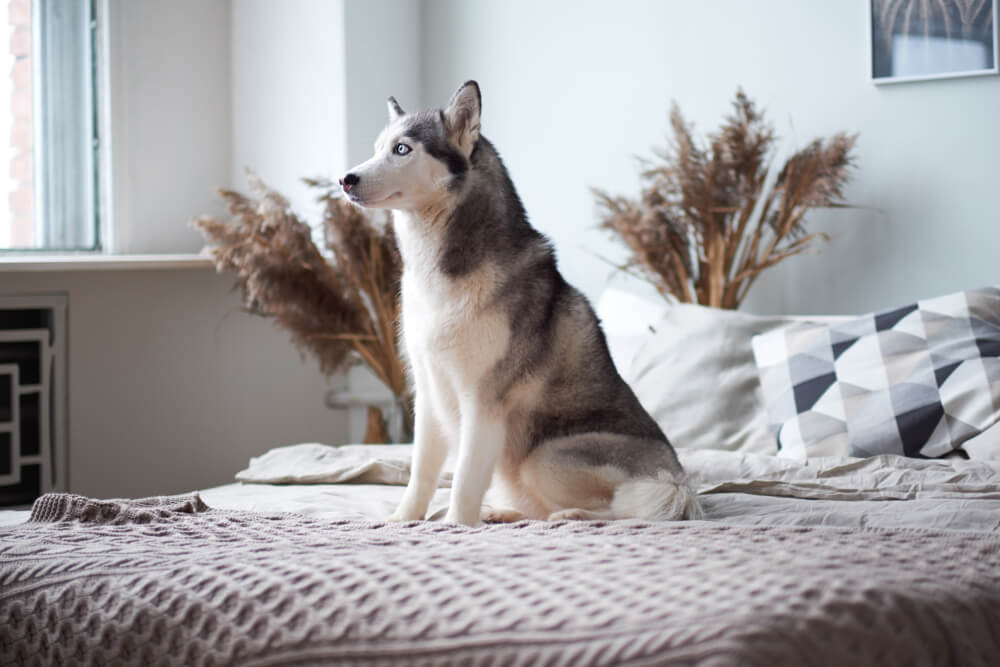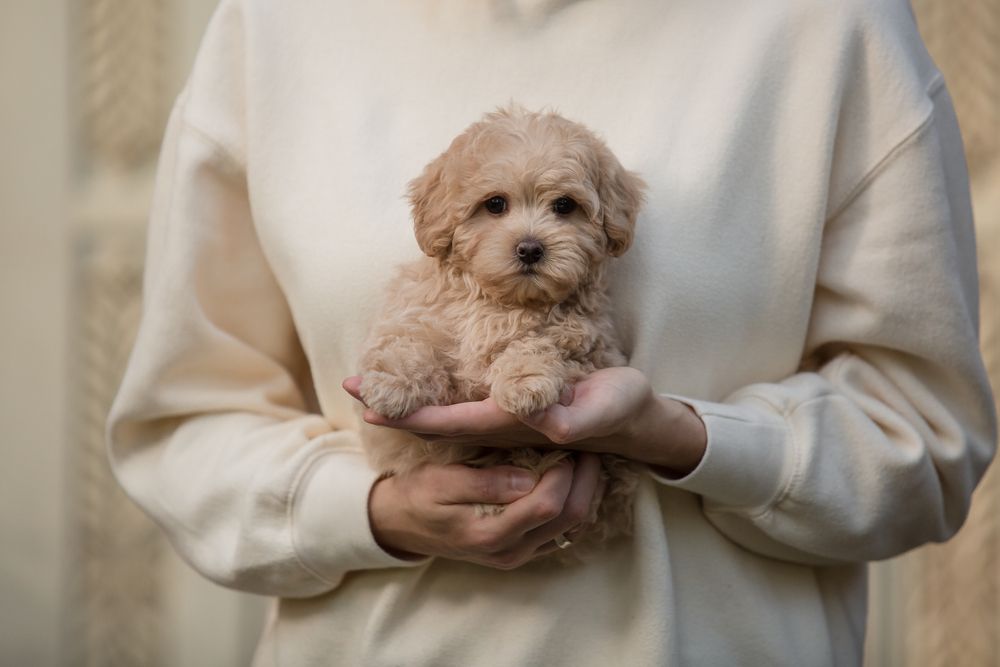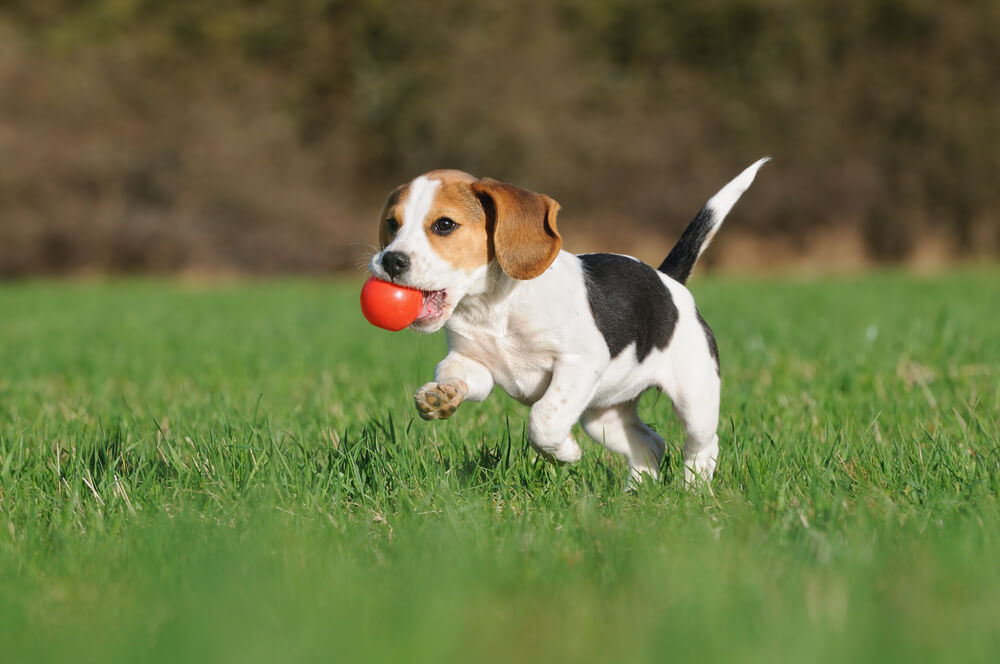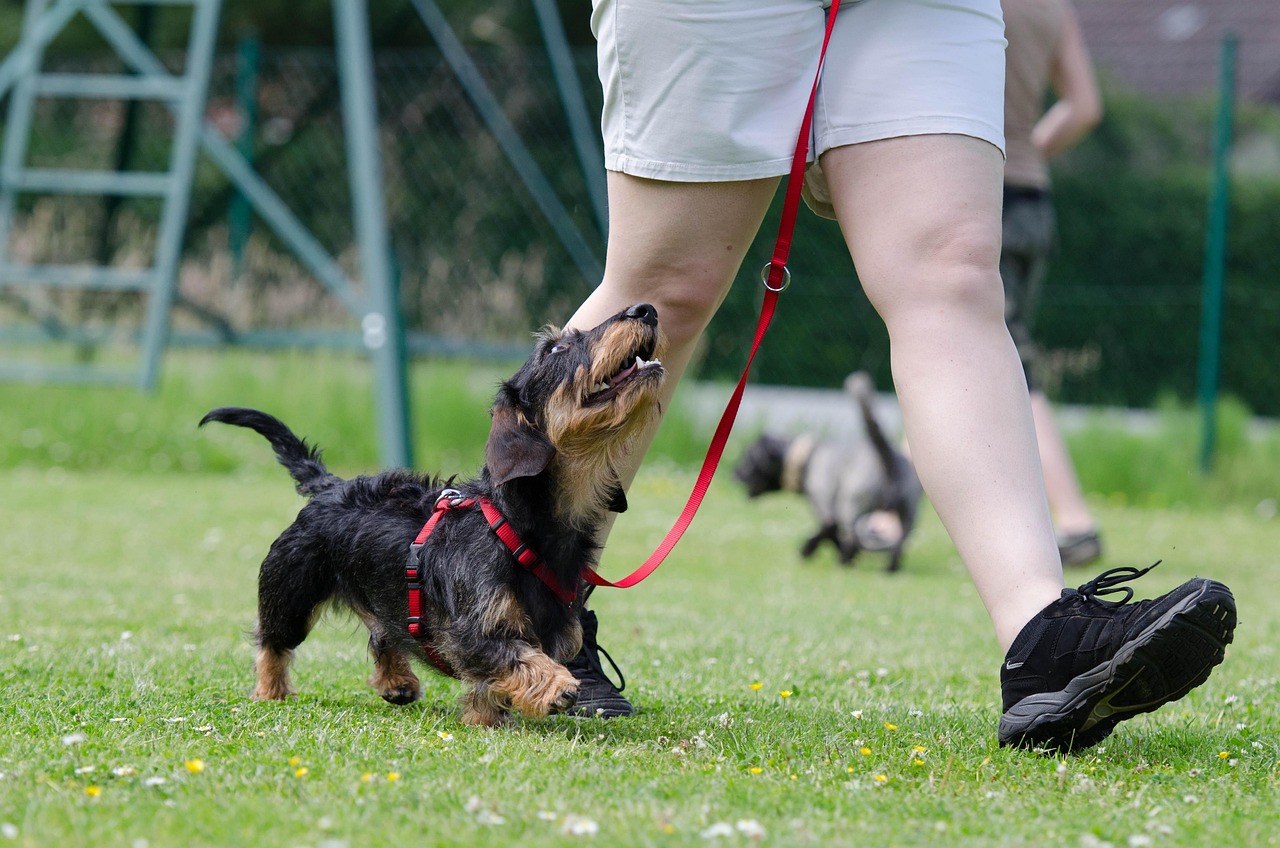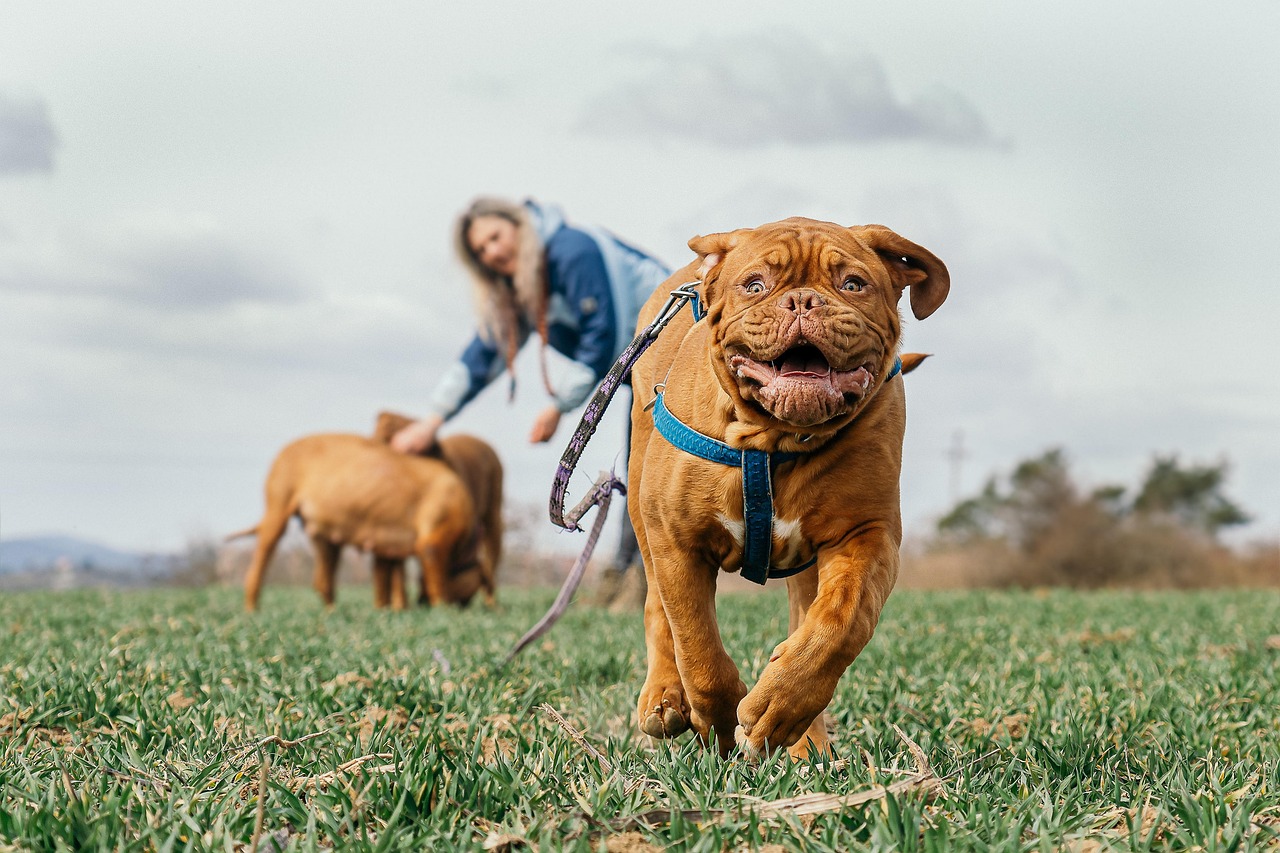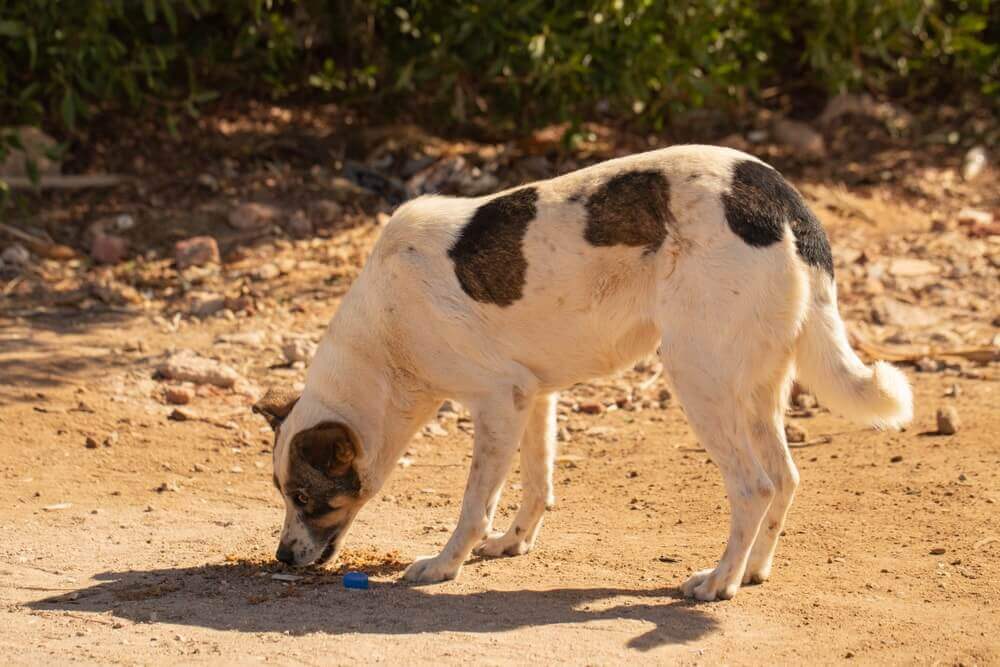Hey Ollie blog readers! We’re offering you an exclusive 60% OFF your starter box! Try now!
Does your pup spin in a circle or rough up his bedding so it’s just right before he settles in for the evening? “While no one can be certain of the exact reason why canines do this, the ritual is likely a residual habit from the days when wolflike dogs lived out in the wild,” says veterinary behaviorist Dr. Karen Sueda, DVM, of the VCA West Los Angeles Animal Hospital.
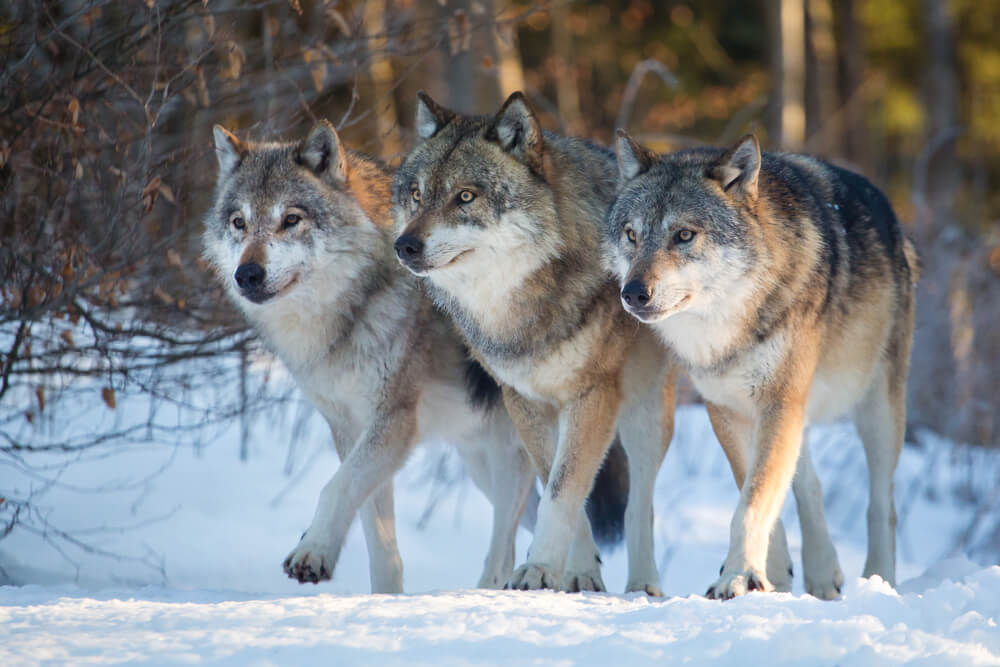
Why Do Dogs Circle Before Laying Down?
Dogs often circle before laying down because it’s an instinct passed down from their wild ancestors. In the wild, circling helped dogs flatten tall grass, clear out pests, and create a more comfortable and safe spot to rest. It was also a way to check the area for hidden threats before settling in for sleep.
Today’s dogs don’t need to prepare a sleeping area in the same way, but the behavior still sticks. It’s part habit, part comfort. Circling may also help dogs align their body in a way that eases pressure on their joints, especially if they’re older or dealing with discomfort.
For most dogs, this pre-nap spin is totally normal. But if your dog circles excessively or seems restless while trying to lie down, it could be a sign of pain or anxiety. In those cases, it’s a good idea to check in with your vet. Otherwise, let your pup spin a few laps—it’s just their natural way of settling in.
The stomping ground: a brief history in canine sleep rituals
Let’s take a walk back in time! Well before dogs were man’s best friend, they were wolves living in the wild and were not at all domesticated.
These canines were wildly different than the pets or working dogs we share our homes with. These dogs had to be completely independent in finding their food and shelter. Interestingly, they were pack animals and lived in ‘family’ units, much like domesticated dogs today. They hunted, moved and even slept together.
At bedtime, these wild canines would stamp down long grasses or dirt to create a comfortable bed to lie down in. The tall grass and large rocks surrounding them offered protection from the elements and other animals. The dogs would pull the grasses around them or scratch the dirt to help regulate the temperature as well.
Ditches or caves also offered optimal protection from both the elements and predators. Many dog trainers will say that wild canines’ cave-dwelling nature supports the use of a covered crate today, drawing a comparison between a cave and the covered crate as your dog’s personal space in your home.
Another theory is that “Turning in circles before lying down is an act of self-preservation in that the dog may innately know that he needs to position himself in a certain way to ward off an attack in the wild. Some wildlife enthusiasts believe that wolves sleep with their noses to the wind so that they can quickly pick up on a threatening scent. Circling allows the wolf to determine the direction of the wind so that he can best position himself. With a quick whiff, the wolf knows that he may be in danger and is alerted for a potential attack.” Says Dr. Lynn Buzhardt in an article for VCA Hospitals.
Why is circling before lying down still important?
While this ritual is no longer performed out of necessity (especially for a dog that sleeps in an orthopedic queen bed), it still has some benefits in helping your pup settle in for the night.
Your dog likely doesn’t have to protect him or herself (or you in the middle of the night) from an attack – unless the cat routinely pounces in the middle of the night!
The benefits of walking in circles include:
- Feeling safe and comfortable: In addition to a circling routine, your dog may arrange the blankets in his or her crate or bed in a specific way to help them sleep. Some dogs like to push the blankets to the edge of the crate, while others make a nest or burrow in. These preferences may also be based on season and temperature. Some dogs with shorter hair may like more blankets as they get cold more easily. Dogs like huskies and samoyeds may not want a blanket at all as their thick coats offer plenty of protection.
- Regulation of body temperature: By walking in circles before settling down, your dog may be helping to regulate his body temperature. Dog body temperatures can vary by a degree or two, and if your dog runs warmer or cooler, circling before settling in can help him get comfortable.
- Checking the environment: Your dog might circle before sleeping to check out the environment and find the safest way to fall asleep. This is especially true if you’ve just moved or your dog is joining you on a family vacation.
- Routine: Just as you might have a bedtime routine that could include a cup of tea or reading for a few minutes, circling before settling down might be your dog’s way of getting ready for bed.
When to worry if you see your pet walking in circles
While a few circles before bedtime can be a good thing, there are some circling behaviors you want to keep an eye on. If you see your dog doing any of the following behaviors, you should call the vet.
- Circling in a corner, having trouble maintaining balance or looking confused could indicate dementia, a brain injury or a tumor. If your pet is elderly or has any other concerning symptoms you will want to get to the vet for an exam. The doctor will perform diagnostic testing to determine the cause.
- Circling compulsively could indicate a mental issue like obsessive-compulsive disorder. If your pet is circling and can’t seem to stop, it’s safest to consult with the vet. Take note of any other symptoms or compulsions and let your vet know. They may prescribe some behavior modification or even medication if needed.
- Circling and biting at their tail or backside may indicate irritated anal glands which can be itchy and uncomfortable for your dog. It could also mean your pet has an infection or parasite. Your vet will do an exam and may ask for a stool sample to analyze if this is the case. Some parasites can be seen with the naked eye while others can only be spotted under a microscope.
- Circling and barking or crying could be due to anxiety or boredom or another type of pain. If the vet has ruled out pain, you may try some behavior modification or enrichment to keep your pet engaged in a healthier way.
It’s okay to enjoy watching your pup perform their nightly bedtime ritual. Monitor your pet for any changes in routine, especially as they get older. Discuss these changes with your vet to make sure there is no concern about another more serious medical condition.
The Ollie blog is devoted to helping pet parents lead healthier lives with their pups. If you want to learn more about our fresh, human-grade food, check out MyOllie.com.
Tagged As:
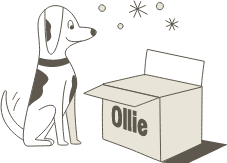
The nutrition your dog needs,
the food they want.

Enjoying our articles? Subscribe our Newsletters and get new articles directly to your inbox
You might also like
23 September 2025
6 MINS READ
Back to School: Training Your Dog at Any Age
As we hit back-to-school season rolls around, it’s not just kids who benefit from sharpening their skills and learning something new—our dogs can, too! Training isn’t limited to puppies or p…
by Ollie Pets
23 September 2025
7 MINS READ
Lace Up and Leash Up: A Beginner’s Guide to Running with Your Dog
Running is one of the simplest ways to stay active, and it’s even better with a canine companion. Not only does running with your dog keep you both in great shape, it also strengthens your bond …
by Ollie Pets
18 September 2025
8 MINS READ
Why Do Dogs Eat Rocks? Common Reasons & How To Stop It
Why do dogs eat rocks and is it dangerous? Learn what causes this behavior, what to watch for, and how to stop your dog or puppy from eating rocks safely.
by Gabby Slome
